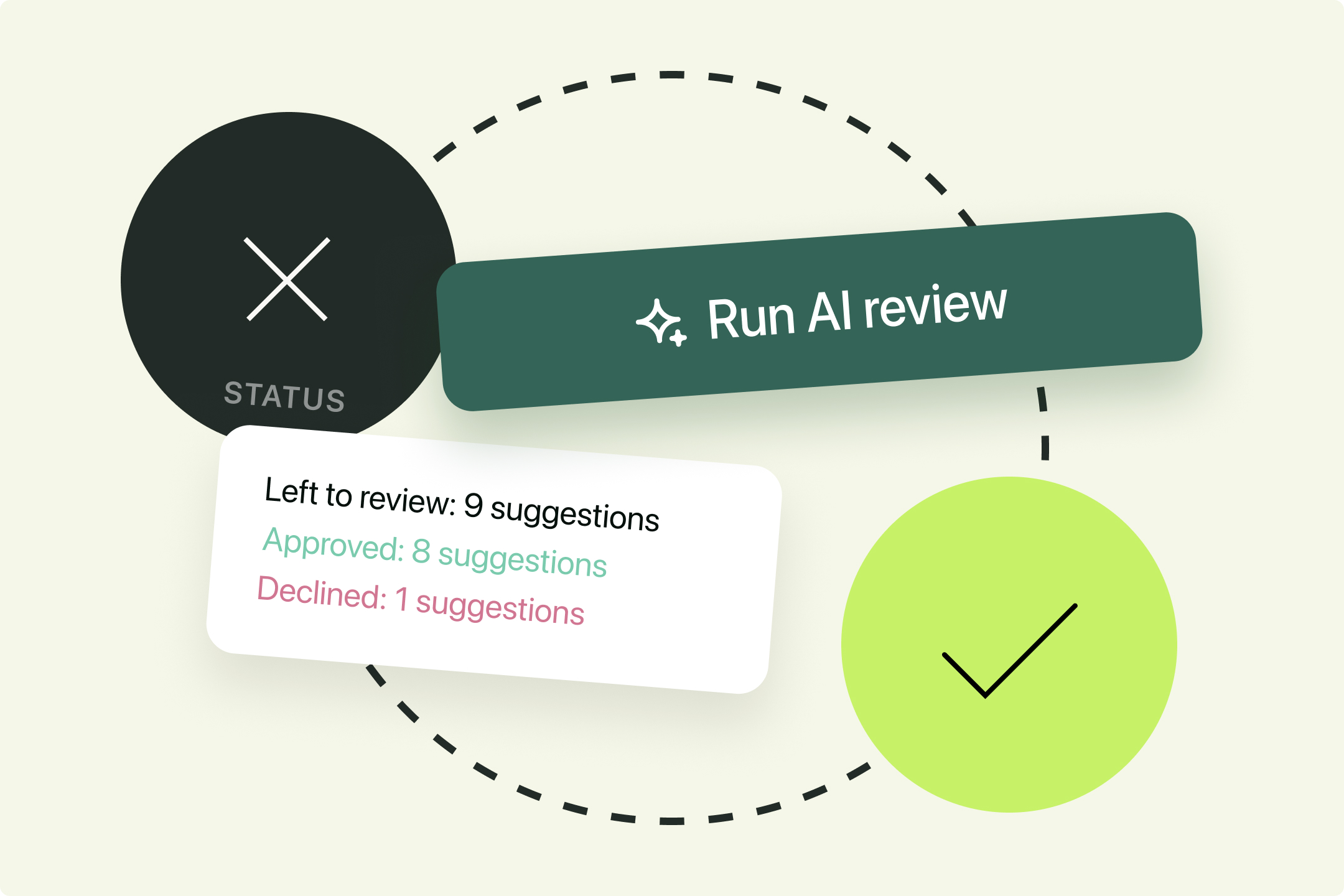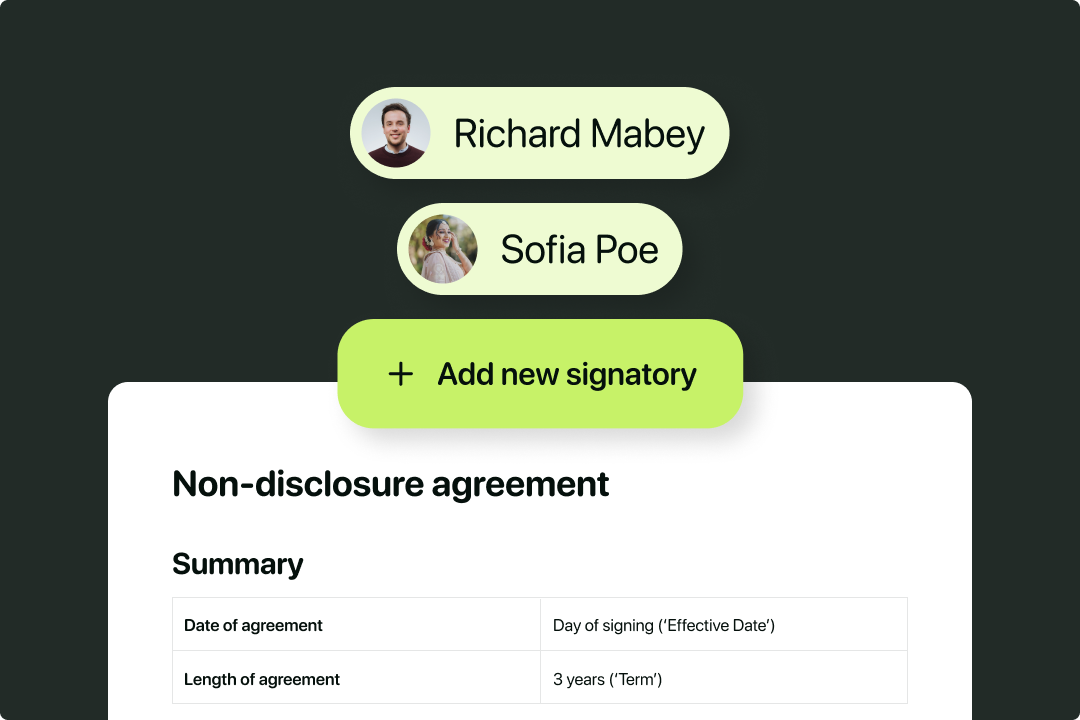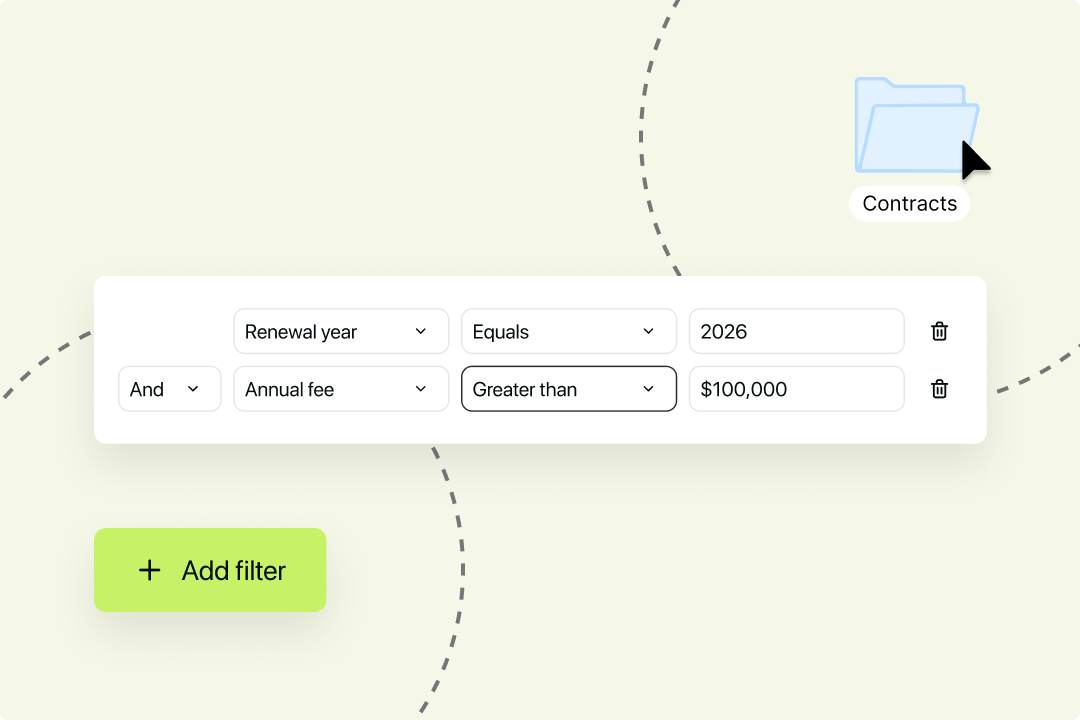Solutions
Customer Support
Resources
Contract efficiency refers to how effectively a business manages its time and resources during the contract process.
Traditionally, contract efficiency has been a difficult metric to pinpoint, largely because it has so many moving parts. However, contract efficiency is far easier to track and improve today, and we’ll explore how in this guide.
Contracts are a route to revenue for businesses. They’re used to close deals and retain customers. This means that inefficient contract management comes at a cost, and that cost is reflected in your bottom line. In fact, studies reveal that poor contract management costs companies around 9 per cent of their revenue.
But that's not the only reason why contract efficiency matters. Contracts are also where your legal team spend most of their time, with more than half of businesses reporting that routine contract admin distracts them from more important tasks.
Maximizing contract efficiency will empower legal teams to focus on higher-value and more strategic tasks that better align with their aspirations and business objectives.

To understand how you should be measuring contract efficiency, it's important to recognize what efficiency looks like in practice.
It isn't just about the time and resource spent agreeing contracts, although that is an important part. It's also about what was achieved during that time and as a result of those resources.
That's why it's important to measure more than just how long you spend on the various stages of the contract lifecycle. You should also measure success at each stage, and there are a few useful contract metrics that enable you to do just that.
Let's explore them now.
If you let it, contract creation can be one of the most time-consuming stages of the contract lifecycle. This stage involves responding to requests for contracts and getting them drafted.
Businesses that can quickly generate agreements using automated contract templates tend to move much faster than those that draft contracts from scratch or create patchwork contracts from several different templates.

As do businesses that empower commercial teams to self-serve on contract creation, rather than relying solely on the legal team for drafting. This is because there are fewer delays and blockers during the drafting process, enabling teams to generate watertight contracts on demand.
As a general rule, you want to respond quickly to requests for contracts and spend as little time drafting them as possible, without sacrificing contract quality and inviting risk.
To measure contract efficiency at this stage, you can track:
Reviewing and processing a simple contract can cost as much as $6,900. It's also one of the most time-intensive tasks lawyers complete, with review work taking lawyers 92 minutes per contract on average. This makes it one of the biggest opportunity areas for businesses that want to operate more efficiently.
To maximize efficiency you'll want to reduce the need for lawyers to review routine, simple contracts by standardizing contract terms. This will free up their time for higher-risk and higher-value contract reviews and reduce the time spent on contract review overall.
These time-savings can also be achieved by increasing contract acceptance rates and minimizing the number of revisions made during the review phase.
To measure contract efficiency at this stage, you can track:
It can be difficult to increase efficiency in the negotiation phase due to the number of stakeholders involved. Not only do you have to rely on counterparties to act quickly and keep things moving, but you'll often require approval from internal stakeholders, too.
Fortunately, there are still a few things you can do to encourage speed and agreement at this stage, including cutting out terms that create a lot of friction but aren't important to your business, and streamlining how you collaborate on contracts.
For example, businesses that move contracts back and forth between different tools during negotiations will often experience more friction, with different requests and revisions captured in different places. Meanwhile, lawyers that use a collaborative all-in-one contract solution like Juro will be able to reach agreement faster, with one source of truth for redlines and comments.

To measure contract efficiency at this stage, you can track:
For more tips on how to reduce time spent in negotiations, check out these tried and tested contract negotiation strategies.
Most businesses will be familiar with the frustration of waiting weeks, or even months, to secure the signatures needed to close a deal.
But you aren't always at the mercy of your counterparty. There are plenty of things you can do to get a contract signed faster. For example, you could offer incentives like end of quarter discounts to encourage faster signing. You can also make sure you're bringing senior stakeholders into the sales process sooner to get the ball rolling on final signatures and approvals.
Another way to save time during this stage is to automate signing reminders for your counterparties using a platform like Juro, rather than dedicating time to chasing signatories manually.
More efficient signing processes are ones that not only reduce the time it takes for a contract to be signed, but also increase the likelihood of signing in the first place.

To measure contract efficiency at this stage, you can track:
Lots of businesses mistakenly believe that the hard work ends once a contract has been signed. But that couldn't be further from the truth. In fact, legal teams face a series of operational challenges beyond that point:
These stats aren't surprising when you consider how some businesses are approaching post-signature contract management today. Contracts are scattered across shared and local drives, with no visibility into the data within them.
To track contracts more efficiently, businesses should start by creating a centralized contract repository where contracts, and their data, live. This will make it far easier to find and query contracts, especially if they're tagged or built as structured data.

To measure contract efficiency at this stage, you can track:
Looking for ways to make your existing renewal processes more efficient? Check out this guide to renewal management in 2026.
Implementing contract lifecycle management software is the best way to maximize contract efficiency if you manage large contract volumes. With a solution like Juro, businesses can create, agree, execute and manage contracts up to 10x faster than traditional tools. This means faster routes to revenue and more time for legal teams to focus on higher-value tasks.
Want to find out more about how Juro works for businesses like yours? Fill in the form below for a personalized demo.
Lorem ipsum dolor sit amet, consectetur adipiscing elit. Suspendisse varius enim in eros elementum tristique. Duis cursus, mi quis viverra ornare, eros dolor interdum nulla, ut commodo diam libero vitae erat. Aenean faucibus nibh et justo cursus id rutrum lorem imperdiet. Nunc ut sem vitae risus tristique posuere.

